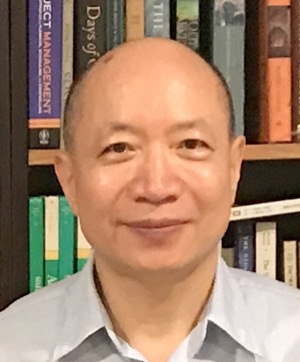Faculty

Hsuan-Chih CHEN
Research Interests
Human cognition; language processing in Chinese; bilingualism; learning and memory.
My research investigates language processing, with a specific focus on the processing of spoken and written Chinese. Because of its salient differences in structure from European languages, the Chinese language provides challenging opportunities to explore both language-specific processes involved in comprehension and communication, and the universality of theories developed from the study of European languages.
研究興趣
人類認知、中文語言加工處理、雙語研究、語言心理學、人因心理學及人與電腦的互動
我的研究主要是探討語言加工處理, 特別是對於口頭與書面形式的中文認知加工。中文與歐洲語言在結構上非常不同,因此為研究語言理解和對話中的特定認知加工、以及探索由歐洲語言研究所發展出的理論的普遍性提供了具有挑戰性的機會。
Publications
Wong, A.W.-K., Wang, J., Wong, S.-S., & Chen, H.-C. (2018). Syllable retrieval precedes sub-syllabic encoding in Cantonese spoken word production. PLoS ONE, 13(11): e0207617. (doi: 10.1371/journal.pone.0207617)
Tsang, Y.-K., Huang, J., Lui, M., Xue, M., Chan, Y.-W., Wang, S., & Chen, H.-C. (2018). MELD-SCH: A megastudy of lexical decision in simplified Chinese. Behavior Research Methods, 50, 1763-1777.
Wang, J., Wong, A.W.K., & Chen, H.-C. (2018). Time course of syllabic and sub-syllabic processing in Mandarin word production: Evidence from the picture-word interference paradigm. Psychonomic Bulletin & Review, 25, 1147-1152.
Wang, J., Wong, A.W.K., Wang, S., & Chen, H.-C. (2017). Primary phonological planning units in spoken word production are language-specific: Evidence from an ERP study. Scientific Reports, 7:5815. (DOI:10.1038/s41598-017-06186-z)
Wong, A.W.K., Chiu, H.-C., Wang, J., Cao, J., Wong, S.-S., & Chen, H.-C. (2017). An early locus of associative and categorical context effects in speech production: Evidence from an ERP study using the picture-word interference paradigm. Language, Cognition and Neuroscience, DOI:10.1080/23273798.2017.1355060.
Wong, A. W. K., Wang, J., Ng, T. Y., & Chen, H.-C. (2016). Syllabic encoding during overt speech production in Cantonese: Evidence from temporal brain responses. Brain Research, 1648, 101-109.
Wu, Y., Tsang, Y.-K., Wong, A.W.K., & Chen, H.-C. (2016). The processing of homographic morphemes in Chinese: An ERP study. Language, Cognition and Neuroscience, DOI: 10.1080/23273798.2016.1227857
Tsang, Y.-K., Wu, Y., Ng. T.Y., & Chen, H.-C. (2016). Semantic activation of phonetic radicals in Chinese. Language, Cognition and Neuroscience, DOI: 10.1080/23273798.2016.1246744
Jia, S., Tsang, Y.-K., Huang, J., & Chen, H.-C. (2015). Processing Cantonese lexical tones: Evidence from oddball paradigms. Neuroscience, 305, 351-360.
Feng, G., Chen, H.-C., Zhu, Z., He, Y., & Wang, S. (2015). Dynamic brain architectures in local brain activity and functional network efficiency associate with efficient reading in bilinguals.NeuroImage, 119, 103-118.
Tsang, Y.-K., & Chen, H.-C. (2014). Activation of morphemic meanings in processing opaque words. Psychonomic Bulletin & Review, 21, 1281-1286.
Wong, A. W. K., Wu, Y., & Chen, H.-C. (2014). Limited role of phonology in reading Chinese two-character compounds: Evidence from an ERP study. Neuroscience, 256, 342-351.
Tsang, Y.-K., Wong, A.W.K., Huang, J., & Chen, H.-C. (2014). Morpho-orthographic and morpho-semantic processing in word recognition and production: Evidence from ambiguous morphemes.Language, Cognition and Neuroscience, 543-560.
Tsang, Y.-K., & Chen, H.-C. (2013). Morpho-semantic processing in word recognition: Evidence from balanced and biased ambiguous morphemes. Journal of Experimental Psychology: Learning, Memory, & Cognition, 39, 1990-2001.
Huang, J., Wang, S., Jia, S., Mo, D., & Chen, H.-C. (2013). Cortical Dynamics of semantic processing during sentence comprehension: Evidence from event-related optical signals. PLoS ONE, 8(8): e70671. (doi: 10.1371/journal.pone.0070671).
Jia, S., Tsang, Y.-K., Huang, J., & Chen, H.-C. (2013). Right hemisphere advantage in processing Cantonese level and contour tones: Evidence from dichotic listening. Neuroscience Letters, 556,135-139.
Tsang, Y.-K., & Chen, H.-C. (2013). Early morphological processing is sensitive to morphemic meanings: Evidence from processing ambiguous morphemes. Journal of Memory and Language, 68, 223-239.
Wong, A.W.K., Huang, J., & Chen, H.-C. (2012). Phonological units in spoken word production: Insights from Cantonese. PLoS ONE, 7(11): e48776. (doi:10.1371/journal.pone.0048776).
Chou, T.-L., Lee, S.-H., Hung, S.-M., & Chen, H.-C. (2012). The role of inferior frontal gyrus in processing Chinese classifiers. Neuropsychologia, 50, 1408-1415.
Wang, S., Mo, D., Xiang, M., Hsu, R., & Chen, H.-C. (2012). The Time Course of Semantic and Syntactic Processing in Reading Chinese: Evidence from ERPs. Language and Cognitive Processes. (doi:10.1371/journal.pone.0036156)
Qiu, L., Swaab, T.Y., Chen, H.-C., & Wang, S. (2012). The role of gender information in pronoun resolution: Evidence from Chinese. PLoS ONE, 7(5): e36156. (doi:10.1371/journal.pone.0036156)
Wu, Y., Mo, D., Tsang, Y.-K., & Chen, H.-C. (2012). ERPs reveal sub-lexical processing in Chinese character recognition. Neuroscience Letters, 514, 164-168.
Ma, L., Jiang, Y., Bai, J., Gong, Q., Liu, H., Chen, H.-C., He, S., & Weng, X. (2011). Robust and task independent profile of the visual word form activation in fusiform cortex. PLoS ONE, 6(10): e26310. (doi: 10.1371/journal.pone.0026310)
Lin, S., Chen, H.-C., Zhao, J., Li, S., He, S., & Weng, X. (2011). Left-lateralized N170 response to unpronounceable pseudo but not false Chinese characters. Neuroscience, 190, 200-206.
Wong, A.W.K., & Chen, H.-C. (2011). Is syntactic-category processing obligatgory in visual word recognition? Evidence from Chinese. Language and Cognitive Processes (doi: 10.1080/01690965.2011.603931).
Tsang, Y.-K., Jia, S., Huang, J., & Chen, H.-C. (2011). ERP correlates of pre-attentive processing of Cantonese lexical tones: The effects of pitch contour and pitch height. Neuroscience Letters, 487, 268-272.




